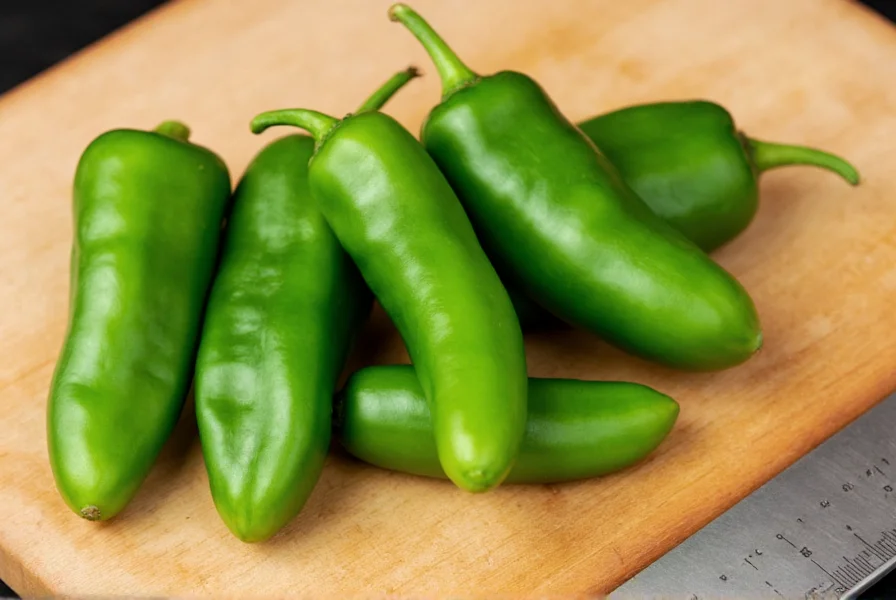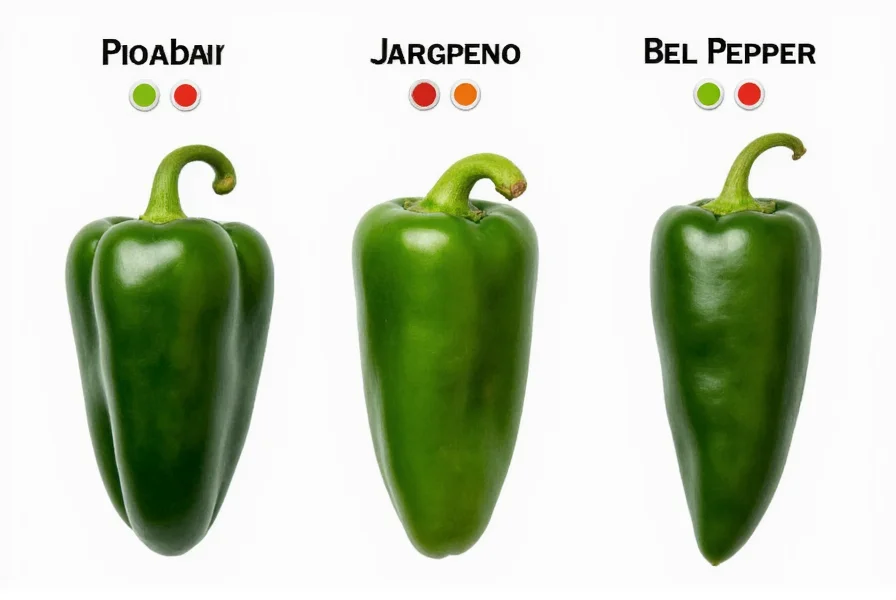Understanding poblano pepper heat levels helps home cooks and culinary enthusiasts make informed decisions when selecting ingredients. These versatile peppers, native to Mexico and commonly used in dishes like chiles rellenos and mole poblano, offer a subtle warmth that enhances recipes without overwhelming spice.
Understanding the Scoville Scale for Poblano Peppers
The Scoville scale measures chili pepper heat by determining capsaicin concentration—the compound responsible for spiciness. Poblano peppers register between 1,000-2,000 Scoville Heat Units, making them accessible to most palates. For context, this means:
- A single poblano contains about 1/5 to 1/10 the heat of an average jalapeño
- They're approximately 10-20 times milder than cayenne peppers
- When roasted, their perceived heat often decreases slightly due to caramelization
| Pepper Type | Scoville Heat Units (SHU) | Heat Level Comparison |
|---|---|---|
| Bell Pepper | 0 SHU | No heat |
| Poblano Pepper | 1,000-2,000 SHU | Mild to medium |
| Jalapeño Pepper | 2,500-8,000 SHU | Moderate heat |
| Serrano Pepper | 10,000-23,000 SHU | Hot |
| Habanero Pepper | 100,000-350,000 SHU | Very hot |
Factors That Influence Poblano Pepper Heat
Several variables affect how hot your poblano peppers might be:
Ripeness: Green poblanos (harvested early) tend to be milder, while red-ripened poblanos develop slightly more heat and sweetness. The red variety, sometimes called ancho peppers when dried, reaches the higher end of the 1,000-2,000 SHU range.
Growing conditions: Soil composition, water availability, and temperature fluctuations can cause natural variation in capsaicin production. Stressors like drought often increase heat levels.
Individual variation: Like all chili peppers, poblanos show natural variation between plants and even between fruits on the same plant. The seeds and white membranes contain the highest concentration of capsaicin.

Practical Cooking Applications for Poblano Peppers
When working with poblano peppers, consider these practical tips for managing their mild heat:
- Heat control: Remove seeds and white membranes to reduce heat by up to 50% without sacrificing flavor
- Roasting effect: Fire-roasting poblanos not only enhances their earthy flavor but can slightly mellow their heat perception
- Culinary pairing: Their mild heat makes poblanos ideal for stuffed pepper dishes, sauces, and soups where you want pepper flavor without intense spice
- Substitution guidance: When replacing jalapeños in recipes, use 2-3 poblanos for equivalent volume but expect significantly less heat
Professional chefs often recommend tasting a small piece before incorporating poblanos into dishes, as heat levels can vary between batches. This simple step helps prevent unexpected spiciness in your final dish.
Comparing Poblano Heat to Common Pepper Varieties
Understanding how poblano peppers compare to other common varieties helps contextualize their mild heat profile:
When comparing how hot are poblano peppers compared to jalapenos, the difference becomes clear—jalapeños typically start where poblanos end on the Scoville scale. A single jalapeño can be up to eight times hotter than a poblano. This makes poblanos an excellent choice for those who enjoy pepper flavor but want to avoid intense heat.
For those wondering are poblano peppers spicy enough for authentic Mexican cuisine, the answer is yes—they provide the characteristic warmth of traditional dishes without overwhelming other flavors. Their heat level falls between bell peppers (zero heat) and the more assertive jalapeño, making them versatile for various applications.

Common Questions About Poblano Pepper Heat
How hot are poblano peppers compared to other common chili varieties?
Poblanos (1,000-2,000 SHU) are milder than jalapeños (2,500-8,000 SHU) but hotter than bell peppers (0 SHU). They're approximately 5-10 times milder than serranos and about 100 times milder than habaneros. This places them in the mild to medium category, making them accessible to most palates while still providing noticeable warmth.
Do poblano peppers get hotter as they ripen?
Yes, poblano peppers develop slightly more heat as they mature from green to red. Green poblanos typically measure at the lower end of the 1,000-2,000 SHU range, while red-ripened poblanos (often called anchos when dried) reach the higher end. The red version also develops more sweetness alongside the increased heat.
Can you reduce the heat of poblano peppers for sensitive palates?
Absolutely. Removing the seeds and white membranes—where most capsaicin concentrates—can reduce heat by up to 50%. Roasting also helps mellow their spiciness while enhancing flavor. For extremely sensitive palates, briefly blanching sliced poblanos in boiling water before use can further reduce heat without compromising texture.
Why do some poblano peppers taste hotter than others?
Natural variation occurs due to growing conditions, plant genetics, and environmental stressors. Drought, temperature fluctuations, and soil composition can increase capsaicin production. Individual peppers on the same plant may vary in heat, with larger peppers often being milder than smaller ones from the same harvest.
Are dried poblano peppers (anchos) hotter than fresh poblanos?
Dried anchos typically measure slightly higher on the Scoville scale (1,000-2,000 SHU) than fresh green poblanos, reaching the upper end of the range. The drying process concentrates flavors and can intensify heat perception, though the actual capsaicin content doesn't increase. Many people perceive anchos as having more complex heat with underlying sweetness.











 浙公网安备
33010002000092号
浙公网安备
33010002000092号 浙B2-20120091-4
浙B2-20120091-4